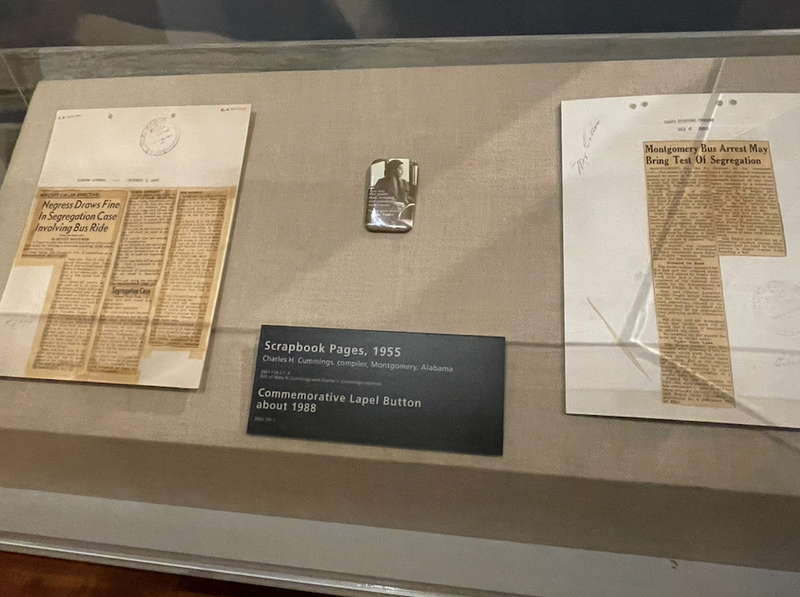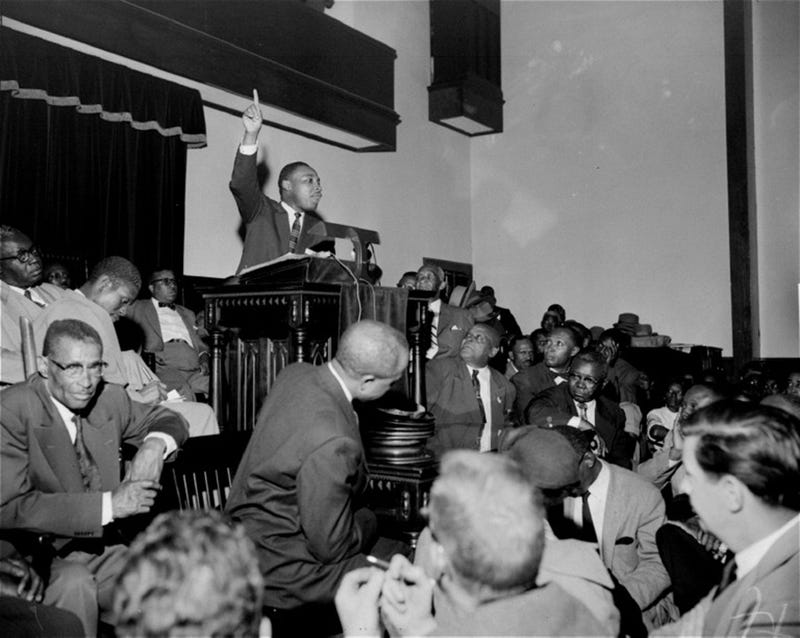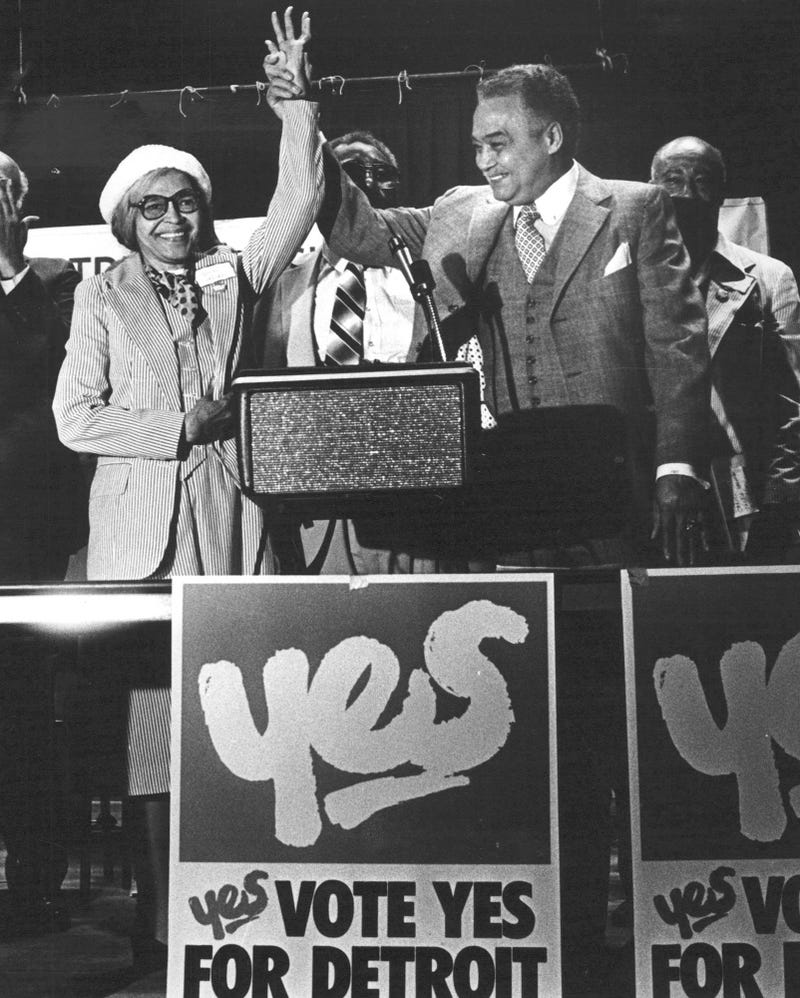
DEARBORN (WWJ) -- On Dec. 1, 1955, Rosa Parks refused to give up her seat to a white passenger on a bus in Montgomery, Alabama, breaking existing segregation laws and subsequently sparking a revolution.
In the nearly 70 years that have followed, Mrs. Parks and that bus have become connected forever in the minds of many, often overshadowing Parks’ long and continuous history of activism within the Civil Rights movement.
Indeed, Rosa Parks deserves to be recognized for her life and public service as a whole, and not just in the context of her actions on that fateful day in 1955, when the then-42-year-old seamstress — both physically and mentally exhausted — decided she’d had enough.
The 2022 documentary “The Rebellious Life of Mrs. Rosa Parks” — which is based off a biography of the same name written by Jeanne Theoharis — tells that story, from her origins in Montgomery, to her activism with the NAACP and other Civil Rights organizations, to her later years in Detroit, where she worked alongside Congressman John Conyers until her retirement.
For a recent episode of The Daily J podcast, WWJ’s Zach Clark and Annie Scaramuzzino headed to The Henry Ford Museum of American Innovation in Dearborn to learn about the life and legacy of Mrs. Parks -- a day after what would have been her 111th birthday.
While there, they were able to board that iconic bus, which is displayed in the “With Liberty and Justice for All” exhibit and is undoubtedly one of the museum’s most iconic artifacts.
But the road to get it there had its share of twists and turns, to say the least.

The museum’s General Manager of Innovation Experiences, Cynthia Jones, explained that the authenticity of bus was initially difficult to verify, because its identification number had not been recorded in Parks’ arrest documents.
Still, there were rumors the bus had been purchased by a man named Roy H. Summerford after it was retired in 1970, and had been sitting dormant in a field outside Montgomery, Alabama.
“…It was very hard to prove that it was the bus because there was very little written documentation,” Cynthia Jones explained. “So in the 1990s, early 2000s, that documentation appeared, and what that documentation is, is an actual scrapbook kept by the bus depot manager, a man named Charles Cummings and he tracked which bus she had been on the day of her arrest, and that scrapbook became available.”

After proving bus #2857 was indeed the “Rosa Parks Bus,” a bidding war began among several museums across the country.
“We started at $50,000 and ended at about $462,000,” Jones said. “Which is, I think honestly an absolute good deal for something that is this caliber of a national treasure.”
After acquiring the vehicle, The Henry Ford Museum had to restore the heavily damaged 1948 GM bus, which had been essentially gutted and used to store lumber and tools.
Partnering with the Southfield-based automotive services company MSX International, the renovations that needed to be done in order to return the bus to its proper 1955 condition amounted to around $300,000.
Thanks to some significant grant funding from the Save America’s Treasures Program, the museum was able to complete the project, and the restored bus was first exhibited at The Henry Ford’s “Celebrate Black History” program on Feb. 1, 2003.

Still, it’s what the bus represents, and not the bus itself, that makes it such a significant piece of U.S. history — and there would be no “Rosa Parks Bus” without the woman behind the story.
A literal vehicle for change, Rosa Parks’ refusal to vacate her seat that December day sparked a bus boycott among the black community in Montgomery, which is still regarded as one of the most successful protests in American history.
After Mrs. Parks was arrested — and later tried and convicted of disorderly conduct — she was asked if she would file an appeal in order to allow the NAACP to use her case to formally challenge the legality of bus segregation.
During that time, a bus boycott was organized by the Montgomery Improvement Association, which lasted for 385 days and ultimately led to the U.S. Supreme Court outlawing racial segregation on public buses in Alabama.
The boycott also served as a launchpad for Dr. Martin Luther King, Jr., who was a young Baptist minister at the time and relatively new to the Montgomery area. Dr. King’s willingness to become a spokesperson during the bus protests transformed him into a national figure, and he soon became one of the most well-known leaders within the history of the Civil Rights movement.

But in the years that followed for Rosa Parks, the notoriety that resulted from her act of defiance did not make for an easy life.
She and her husband Raymond lost their jobs, and she received near constant death threats in Montgomery. By 1957, the Parks family had packed up and moved north to Detroit, where her younger brother Sylvester was already living at the time.
Still, the difficult times continued in Detroit, as Rosa and Raymond Parks struggled to find work while dealing with a backdrop of police brutality, the dismantling of black neighborhoods like Black Bottom, and the eventual 1967 Rebellion.

Through it all, Mrs. Parks never wavered in her activism, and she continued to fight for civil rights alongside organizations like the NAACP and the League of Revolutionary Black Workers. She supported John Conyers, Jr. as he ran for Congress in 1964, and upon his election, received her very first paid political job at the age of 52. She served on his staff from 1965 until her retirement in 1988.
And when the infamous bus made its pilgrimage from Montgomery to Dearborn in 2003, Parks was present at The Henry Ford Museum, where she recommended that visitors be able to experience the bus first-hand, instead of simply viewing it from behind a barrier.
One of those eventual visitors was President Barack Obama, who was famously photographed on the bus while campaigning for reelection in Michigan in 2012. Obama is among the many who have credited Mrs. Parks with bringing the Civil Rights movement to the forefront with her “singular act of disobedience.”

“Rosa Parks tells us there’s always something we can do,” President Obama said during an unveiling of a statue of Parks at the U.S. Capitol in 2013. “She tells us that we all have responsibilities, to ourselves and to one another.”
A screening of the documentary, “The Rebellious Life of Mrs. Rosa Parks,” is scheduled for Saturday, Feb. 10 at The Henry Ford Museum of American Innovation.
